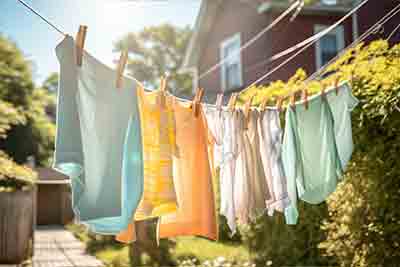The Blog
Laundry Tips
July 12, 2023

Unless you have the laundry fairy on speed dial, chances are you or someone in your household does up to 300 loads of laundry each year. Washing laundry requires about 6,000 gallons of water each year, and the dryer is the 2nd biggest user of energy in most houses behind the fridge. The United States’ annual residential laundry carbon emissions is equivalent to powering 21 million homes. So, what can we do to reduce the environmental impact of laundry, and maybe save some money while we are at it?
- Reduce the number of loads of laundry that is done by wearing clothes more than once and running full loads.
- Wash on cold. Heating the water in a washing machine takes up to 90% of a washing machine cycle’s energy. While washing on hot is still needed for germ filled loads, cold cycles are generally better for making clothes last longer and removing stains.
- If a washer or dryer needs to be replaced, be sure to choose an efficient energy star option. It could save you $370 in operating costs over your washer’s lifetime, and only uses 25 gallons per load, compared to 40 gallons for older machines.
- When it comes to drying, air dry if possible. Not only will you reap the savings from not using your energy hogging dryer, but you will also extend the life of your clothes.
- When using the dryer, make sure to properly clean the lint filter, and consider using dryer balls to reduce laundry drying time and energy use. Dryer balls also have the added benefit of softening laundry, making them an ideal replacement for single use and chemical laden dryer sheets.
By Montana Burack, Park City High School